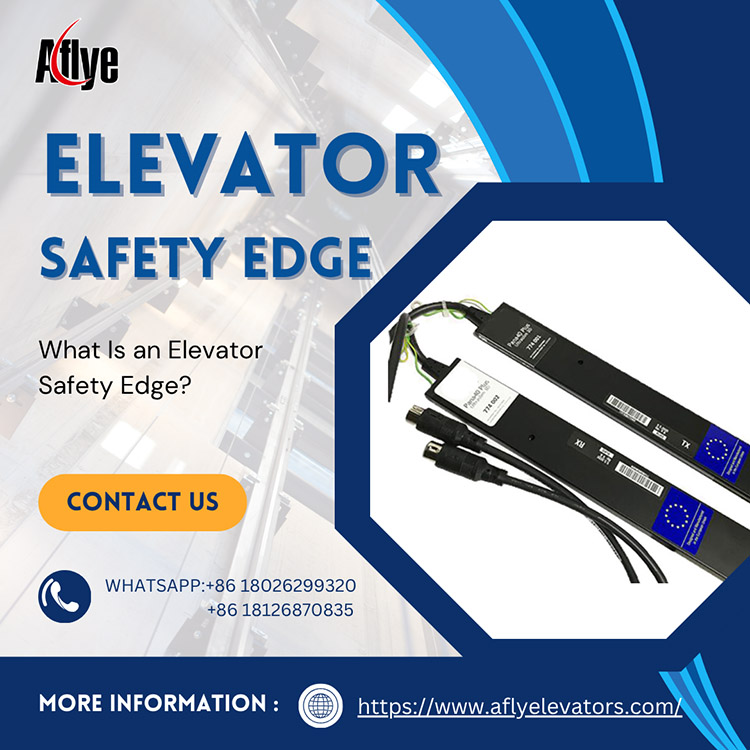What Is an Elevator Safety Edge?
During elevator operation, the opening and closing of landing doors are among the most common sources of safety risks. To prevent passengers from being injured by closing doors when entering or exiting the car, modern elevator systems are widely equipped with a vital protective device — the Elevator Safety Edge.

It is an essential part of the elevator door protection system, designed to ensure passenger safety at critical moments.
1. Definition of Elevator Safety Edge
An elevator safety edge, also known as a door safety edge or door edge switch, is a mechanical sensing safety device installed on the front edge of the elevator car door.
When a passenger or object comes into contact with the edge during door closing, the edge compresses and immediately sends a signal to the elevator control system, instructing the door to stop and reopen.
This prevents accidents involving trapped people or objects.
In earlier elevator systems, the safety edge was the main anti-pinch device. In modern elevators, it is often used together with infrared light curtains, forming a dual safety protection system.
2. Working Principle of the Safety Edge
The safety edge typically consists of elastic rubber, conductive strips, or an airbag sensor structure.
When the door closes and meets an obstacle, the sensing mechanism inside the edge is compressed or deformed, triggering a circuit change (open or close).
Once the elevator control system receives the signal, it immediately performs a “stop + reverse door” action.
This design allows the elevator door to respond extremely quickly upon contact, protecting passengers while also preventing damage to the door operator mechanism.
3. Common Types of Elevator Safety Edges
Mechanical Safety Edge
A traditional design that uses mechanical pressure to trigger signals. Simple structure and easy maintenance, suitable for older elevators or modernization projects.
Airbag Safety Edge
Contains an air chamber that changes pressure upon contact, activating the sensor. Offers high sensitivity and smooth response.
Capacitive or Electronic Safety Edge
Uses capacitive or microelectronic sensing technology for precise detection of even light contact. Widely applied in modern elevators.
4. Advantages of Elevator Safety Edges
Fast Response, Reliable Protection: Signal feedback occurs within milliseconds.
Durable and Long-Lasting: Made with anti-aging rubber and wear-resistant materials.
Easy Installation and Maintenance: Compatible with mainstream door systems and easily replaceable.
Dual Safety Integration: Can work in conjunction with infrared light curtains to enhance safety performance.
5. Choosing a High-Quality Elevator Safety Edge
A reliable safety edge not only reduces elevator accidents but also extends the lifespan of the door operator and control system.
When selecting a product, key factors include sensitivity, durability, IP protection rating, and compatibility with the control system.
A-FLY, a professional supplier of elevator and escalator components, offers a wide range of elevator safety edges, light curtains, safety strips, door operator parts, and control board modules.
A-FLY products are compatible with major elevator brands and widely used in maintenance and modernization projects.
With stable product quality, global shipping capabilities, and technical support, A-FLY has become a trusted partner for elevator service providers worldwide.
6. Conclusion
Though small in size, the elevator safety edge plays a crucial role in passenger protection.
It ensures that every door movement is smarter and safer.
Choosing high-quality safety edges and accessories is essential for maintaining reliable elevator operation and improving passenger comfort.
A-FLY — Providing strong support for safe elevator operation worldwide.

